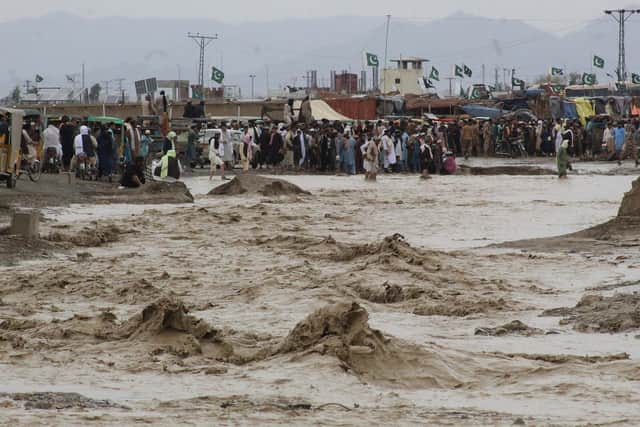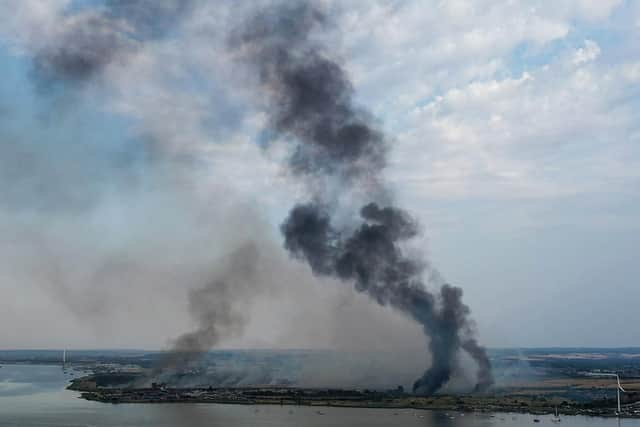Climate change: When scientist Eunice Foote warned about global warming in 1856, she was ignored. It's time to get to work – Dr Alice Bell
Her name was Eunice Foote, and at the time, no one paid much attention. This lack of attention was partly sexism, but only part.
Foote herself wasn’t too worried by her findings. Today we think how visionary her work was, how key to the future of humanity. For Foote, it was just reasonably interesting work with gases.
Advertisement
Hide AdAdvertisement
Hide AdToday, with the advantages of modern science, we know the Earth was already warming under Foote’s feet, but she had no idea.
It’d be almost another half decade – at the turn of the 20th century – that a group of Swedish scientists would even consider that humans burning fossil fuels might create enough carbon dioxide to warm the Earth. Most famous amongst them was the Nobel Prize winner, Svante Arrhenius (who, for trivia fans, is a relation of Greta Thunberg).
Arrhenius and his colleagues reckoned this would take centuries though, and then it would be a good thing, a further sign of progress of the industrial age.
To modem eyes, this might seem laughable, shocking even. But no one had done the science to work out the impacts – in places, the very ways of doing that science hadn’t been invented yet. Perhaps understandably, northern European researchers were a lot more worried about a lack of heat than too much.
At first, Arrhenius’ ideas remained relatively fringe science. And yet the warming continued apace, and was getting harder to ignore. Coal burning continued to grow, and new oil-based transport like cars and planes offered fresh reasons to set fire to the ancient carbon embedded in fossil fuels.


In 1912, Popular Mechanics magazine scoured weather records to establish that the warm temperatures weren’t just old men complaining “winters aren't like they used to be”. It published one of several articles that appeared in the mainstream media that year which looked again at Arrhenius’s work, and wondered if, considering the prodigious quantities of fossil fuels that parts of the industrialised world were getting through, maybe his prediction of a warmed world had come earlier than imagined?
Still, Popular Mechanics thought this warming was all to the good, going as far as to say future generations would look back and thank them for burning so much coal.
As the century went on, warming continued. Engineer and amateur meteorological researcher Guy Callendar (whose day job was in the fossil fuel industry) presented calculations to the Royal Meteorological Society suggesting a third of a degree’s warming during the previous few decades, which he linked to rising carbon emissions, but was largely laughed out of the room.
Advertisement
Hide AdAdvertisement
Hide Ad

Meanwhile, Swedish glaciologist Hans Ahlmann was recording rapid warming in the polar regions, calling it klimatförbättringen, or “climate embetterment”. But this was the late 1930s, and the world soon went to war – Callendar himself joining the Petroleum Warfare Department – and largely forgot about the question once again.
By the mid-1950s, parts of the US were sweating through yet another heatwave. Tourist resorts were doing well but farmers were despairing and, as in 1912, a few people looked again to the carbon dioxide theory.
There’d been a huge expansion of research post-war, especially in the US, with fresh techniques and equipment, and military funding, able to be applied to the question. Armed with these new resources, scientists could see more deeply, in more detail and with greater precision. The role carbon dioxide was already playing in changing the weather was harder to dismiss.
In 1956, a Californian oceanographer, Roger Revelle, gave Congress their first briefing on the problem. He was clear the burning of fossil fuels was already messing with the weather, and it was a big deal, but figured we'd move to nuclear power soon anyway and fossil fuels' days were numbered, so we’d solve the problem soon enough. (Revelle’s tone would change as he learnt more, and he’s also notable as introducing a young Al Gore to the topic, at Harvard).


Revelle managed to bring in more funding, and with that more scientific eyes. Before long, features by Shell scientists were appearing in New Scientist telling everyone not to worry.
In 1963, the first international conference on the build up of carbon dioxide in the atmosphere took place. This included ecologists’ points of view alongside geophysicists like Revelle. They noted warming waters were already disrupting fish stocks and raised a sense of fear and alarm we are more used to associating with the idea of global warming today.
It’s with that richer, interdisciplinary approach that climate science matured in the 20th century, gradually picking up better, more alarming evidence of the impacts that climate change is now having and could accelerate too in the near future.
We’re a long, long way from Popular Mechanics musing about how maybe, in hundreds of years, future generations will look back and thank their ancestors for burning coal. With news just this week of a third of Pakistan under water, we’re a long way from that indeed.
Advertisement
Hide AdAdvertisement
Hide AdIt’s hard to tell what Eunice Foote would have made of this all. She was a woman’s rights activist as well as a scientist, so we might imagine she’d be standing side by side with Arrhenius’ relative, Greta Thunberg, shouting it’s high time the politicians treated the situation as an emergency.
As Barack Obama said in a 2014 speech, which itself is greying fast, we're the first generation to really feel the impacts of climate change, but the last who can really do anything about it.


Unlike people before us, we know exactly the size of the problem. Let's not drop the precious opportunity we still have, and act.
Our Biggest Experiment: A History of the Climate Crisis by Alice Bell is published by Bloomsbury Sigma
Comments
Want to join the conversation? Please or to comment on this article.
